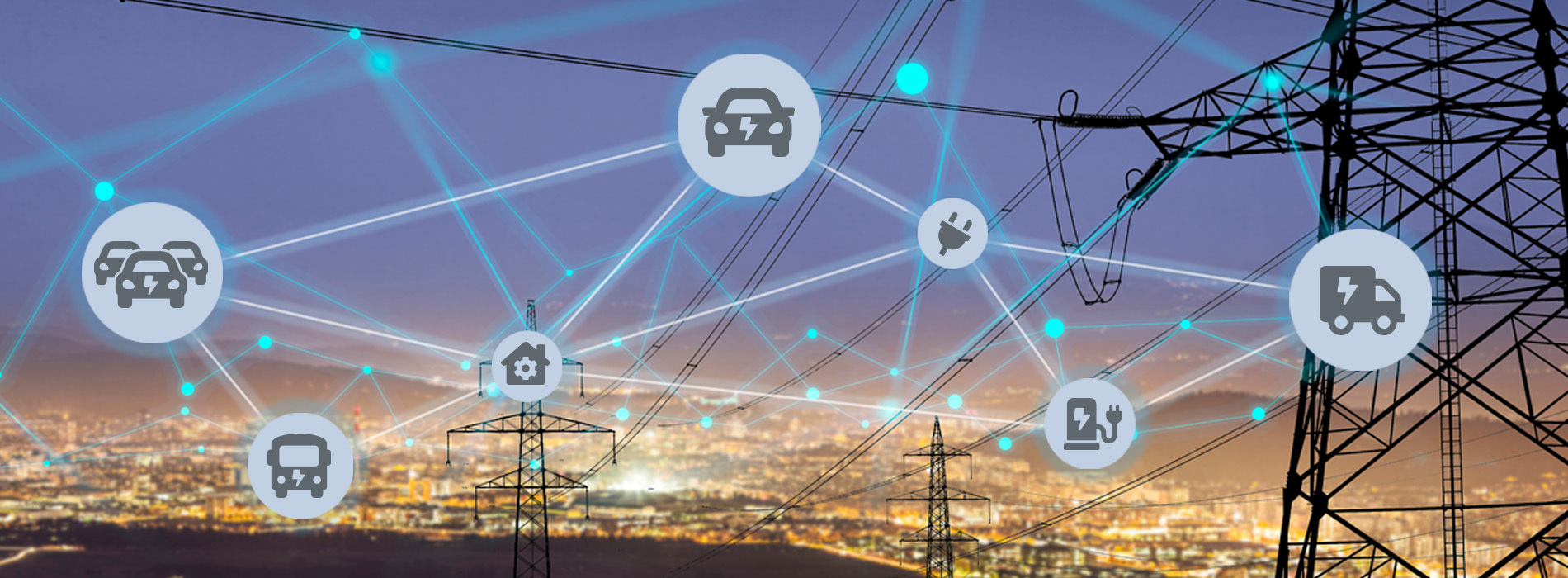Grid Integration of EV Batteries Can Benefit Drivers and Energy Providers

Electric vehicles (EVs) are increasingly becoming mainstream. In California, over a quarter of all new cars sold in Q3 2023 were EVs – spurred in part by state incentives and federal tax credits. While EVs made up only 8% of new car sales nationally last year, analysts forecast they could grow to 30-50% by 2030.
The widening adoption of EVs has policymakers, regulators and utilities examining how to prepare for the increasing demand for power. Solutions range from investing in grid infrastructure to encouraging EV charging overnight, when demand is low, or during the day, when wind and solar power are abundant.
One piece of the puzzle is to leverage the capacity of EV batteries to store energy when demand is low and either use the energy on-site or sell it back to the grid when demand is high, a technology known as vehicle-to-grid or V2G.
This concept has been explored for years, but practical application of it will require changes by EV manufacturers, utilities, regulators and EV owners.
How does V2G work?
Certain EVs, such as the Ford F-150 Lightning and Nissan Leaf, have a feature called bidirectional charging. This allows EV batteries to supply power for a variety of purposes, known as V2X, with X standing for various uses. For example, an EV battery could power your home during a brief power outage (also known as vehicle-to-home or V2H) or help reduce a building’s energy use when there’s high demand (vehicle-to-building or V2B). The feature can also send excess power to your local grid (V2G) under certain conditions where electric utilities and markets allow.
Not all EV manufacturers equip their vehicles with bidirectional charging capability due to technical challenges and concerns about adding costs to already pricey EVs. Some EV models offered by Ford, Hyundai, Kia, Mitsubishi, Nissan, Toyota and Volkswagen include bidirectional charging capability. Additionally, Tesla has announced that all models will support bidirectional charging by 2025, while General Motors plans to implement bidirectional charging in all their standard EVs by model year 2026.
What are the societal benefits of V2G?
Providing increased resilience for the grid
During a 10-day heat wave that raised blackout concerns in Southern California, a small San Diego County school district harnessed energy from its seven electric school buses and redirected it to the grid to power 452 homes. This use of V2G can support a dependable electricity supply for consumers and may reduce air pollution from fossil fuel-powered “peaker plants” used to meet high energy demand, many of which are in economically disadvantaged neighborhoods.
Providing extra income to EV drivers
In Denmark, EV fleet owners participating in a program managed by Nissan Motor Co. and Enel SpA in 2017 earned about $1,400 per vehicle per year for feeding power back to the grid. Initiatives like this hold promise in reducing the costs of purchasing and maintaining an EV. However, the technology, regulations and business models are not yet in place to be able to turn V2G into a profitable enterprise.
Storing energy for local and national grids
On a small scale, local microgrids with renewable resources could leverage V2G-capable vehicles as energy storage solutions, increasing energy independence and resilience. On a larger scale, V2G can also impact renewable development. One study noted that introducing V2G in the PJM grid operator system could help spur a 30% increase in renewable energy development, adding an extra 51 gigawatts to the PJM grid serving 13 Eastern and Central states.
What are the challenges to V2G?
While the possibilities of V2G are intriguing, widespread implementation faces challenges that will require action from different stakeholders, including:
- Regulators: Policies governing V2G, including grid connections and pricing, will need to incentivize utilities or require them to adopt V2G. Regulations will also need to be harmonized across states. Several regulated charger incentive programs require that chargers be V2G-capable in the future.
- Automakers: More EV manufacturers will need to incorporate bidirectional charging into their EVs.
- Utilities: Utilities will need to better anticipate EVs as a growing source of demand and leverage them as potential energy-storing assets. A study by Pacific Gas and Electric Company and BMW of North America found that a V2X-connected EV can supply twice the amount of renewable energy typically consumed by an average household in California.
- V2G service providers: Companies trying to enter this potential market will need to adapt to changing regulations and energy markets while maintaining competitive V2G-compensation prices.
- EV owners: EV owners will need a compelling value proposition to consider V2G and will need to have their concerns about utility interaction and any potential impacts on their battery durability addressed.
Unlocking V2G’s societal and business advantages will require regulatory support and proactive engagement with automakers, utilities V2G service providers and EV owners to ensure a seamless integration that maximizes benefits of V2G.


